The 2016 FIFA Futsal World Cup was unpredictable and finished with a new name being inscribed on the trophy. After the draw for the finals many expected, considering their complete domination in the past, Brazil and Spain would meet at the semi-final stage with the winner going on to take the title. Neither made it that far and instead it featured Iran and Russia, the culprits for sending the favourites home earlier than expected.
Despite defeating the only nations to ever win the competition, it wasn’t to be one of those that would take the title. Instead the winner came from the other side of the draw which included Argentina, Portugal and Italy. The latter was probably the favourite there but they were surprisingly knocked out in the last 16 by Egypt. Russia and Argentina contested the final and again the favourites lost, meaning the South Americans rewrote history to become World Champions for the first time.
All these close matches with unpredictable outcomes resulted in great entertainment. I was covering many of the games commentating for Eurosport and several aspects stood out for me. There is a limit to what you can draw from an event that lasts only three weeks but the comparisons with previous editions, held every four years, make the incremental changes that are happening continuously more noticeable. Here are my 10 reflections on the 2016 FIFA Futsal World Cup.
1. Champions Argentina
2. The Final
3. The Duopoly Is Over
4. UEFA Is the Strongest Region
5. Developing Regions Catching Up
6. High Pressing
7. Pivot Masterclass
8. The Next Superstar
9. Organisational Matters
10. Redress for Mati
1. Champions Argentina
Argentina demonstrated what can be achieved with belief and teamwork. In terms of individual ability it is arguable whether they would have been included in the top five squads pre-tournament but, as the end result shows, they proved the best team. Captain Willhelm won the Golden Ball but it is difficult to highlight one player above the others, signifying the victory was the product of a collective effort.
However, there is one individual that deserves a significant proportion of the credit for this achievement. The players are always the protagonists but Head Coach Diego Giustozzi was responsible for making the whole greater than the sum of its parts. It is incredible to think that in his 3rd year coaching he is a World Champion. There can’t be many in any sport that have achieved such a feat.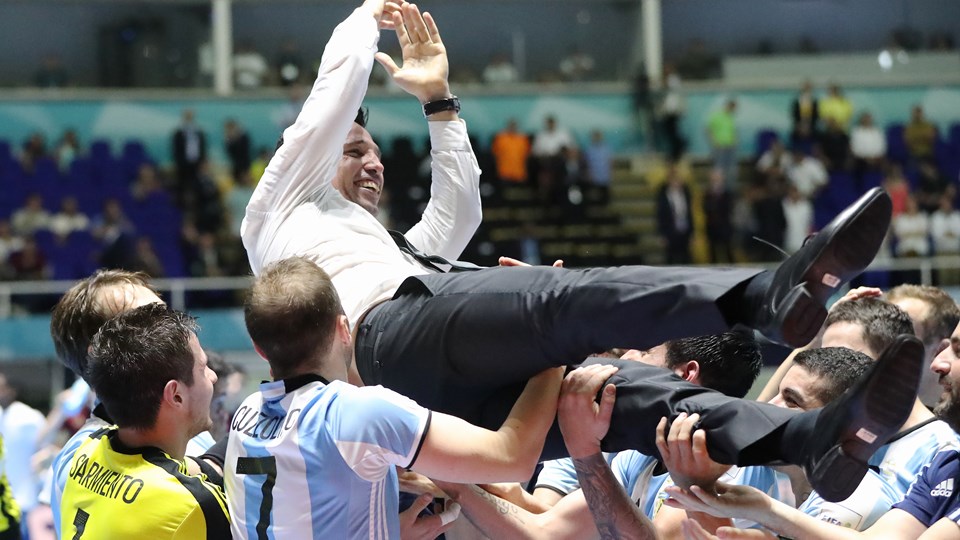
To generalise, a good coach either has an in-depth tactical knowledge and a capability to read the game or an ability to manage the group well and create the appropriate mental approach for success. What the great coaches are able to do, and they are rare, is to combine both which is what the inspirational Giustozzi has shown himself capable of in Colombia.
When he took over in 2014 he completely changed the outlook of the group. Previously they would sit back and wait to counter. They were a top 10 nation that had respectable results but couldn’t challenge the top nations such as Spain, Russia and, most notably, arch rivals Brazil. His transformation began by implementing a system where he wanted the team to be comfortable having long spells of possession and press aggressively without the ball to quickly win it back. This was the case whoever the opponent.
I have said previously how you cannot separate different aspects (technical, tactical, physical & psychological) of the game as they are all interconnected. This tactical change around wanting the ball had a subsequent impact on their mentality. Whichever team they faced they no longer felt inferior and developed a confidence that they were going to dictate the game. A change from being reactive to being proactive, reducing uncertainty and a lack of control, fuelled their confidence.
The new approach had immediate results as they beat Brazil twice in his first year, their first victories over their neighbours in over a decade. This was the first step on a journey that would surpass even their own most optimistic expectations. Pre-World Cup Giustozzi had said they would be serious contenders in 2020 with the talent in their junior sides, suggesting that he didn’t think they were this time. They executed their tournament perfectly to win futsal’s most prized trophy.
As World Champions they are now the team to beat and maintaining your position at the top is just as much of a challenge as getting there. Brazil and Spain will be doing everything in their power to re-establish their previous supremacy in 2020. At that time Argentina should be in good shape to defend their title as the only key players from this squad that will be over 35 then are Willhelm and Alamiro Vaporaki, and they have four years to integrate the youngsters coming through.
2. The Final
In their run to the final Russia had a 100% record including a 6-2 win against their nemesis Spain, making them slight favourites going into the final. They had evolved since the European Championships earlier this year, looking more dangerous in attack though still heavily reliant on playing through the pivot. They had also added a threat through high pressing, especially with Chishkala, maybe a lesson learned from Spain in that tournament.
In the final Argentina’s high pressing blunted Russia’s attacking threat by addressing their main weapon, the pivots. They didn’t allow Russia to make easy passes forward into them as there was always good pressure on the player in possession. This is the most important aspect of any defence as if this is good then it covers up for bad positioning elsewhere. Their first line of defence carried out this responsibility exceptionally. It allowed their last defender to be able to anticipate and intercept the ball in front of the pivot. Rescia, Stazzone and Taborda did a great job marking both their pivots, Lima and Lyskov.
To get out of the press requires a lot of movement and interchanging of positions to open up forward passing lines. Russia have always lacked mobility as they don’t have such agile players. When they did manage to play forward to the pivot it was either a difficult pass to get under control or the pivot was receiving the ball too far away from the goal to be dangerous. When Eder Lima did get hold of the ball in good positions we saw how lethal he can be and why they wanted to cut off his supply.
At the beginning of the game Russia also pressed high, though without the players to execute it to the same intensity. It was effective in stopping Argentina having control of the ball early on but facing this tactic was not necessarily bad for the South Americans as it leaves space further up the court. They have the tools to take advantage of this by being competent in the build-up phase, combining well with good movement and ball circulation. When the Russians got good pressure high up the court their opponents looked for direct long passes, often aerial which prevents a quick counter and once in the final 3rd they played simple and effectively.
Argentina’s quick play utilised their faster players compared to Russia’s stronger and heavier outfit. This difference in physical characteristics brought another positive from their rival’s high pressing that would become evident as the half time interval approached. Russia began to tire and, without the capability to maintain the same intensity in pressing, it allowed Argentina more time on the ball. This was a familiar pattern that we saw occur in Russia’s previous game against Iran, who were able dominate the second half.
As the game went on and they found it difficult to get their favoured tactic of playing into the pivot functioning, Head Coach Skovorich looked for alternatives. He first modified the second of the two fours he interchanges by replacing Lyskov with the more mobile winger/pivot Abramov. Still looking for a suitable solution he then played without any pivot. This tactic requires even more mobility, not something they are used to, and they continued to struggle to break through their opponent’s defence.
The opportunity for Russia came when Argentina committed their fifth foul in the second half, limiting how aggressively they could press without risking a 10m penalty being awarded. They came more into the game at this point and on occasion used Robinho in 1v1 situations when they go in that 1-3 formation uniquely applied to create space for the skilful Brazilian-born winger. It had some effectiveness with their opponents careful not to commit the sixth foul.
Still unable to reduce the 2 goal deficit and time ticking away, Russia gave it one last throw of the dice by employing the fly goalkeeper. Defending the fly goalkeeper is all about hard work and organisation, the characteristics of Argentina throughout the tournament. They did a great job in this aspect to hold out even if they had a cagey period conceding two goals after going up by three. The final whistle blew to signal another final defeat for Russia, having lost the last three Euros at the same stage, and crowning Argentina world champions for the first time.
3. The Duopoly Is Over
Before this tournament every final spanning two decades had been Brazil v Spain except 2004 where they met in the semi-final. But all dynasties finally come to an end. Brazil went out in the first round of the knockout phase and Spain at the quarter final stage. Considering their histories, their exits from the competition were widely described as a shock but I think if you analyse this it is not as surprising as it first seemed.
Since their victory in 2012 the Brazilian national team has experienced the most turbulent period in their history. Accusations of corruption and claims of nepotism at the top led to a police investigation and two changes of the president of the federation. Sponsors abandoned the organisation, leading to huge debts that couldn’t be serviced and a financial crisis that forced the sale of their training centre.
On the playing side the four year cycle saw two players boycotts and they changed the coach three times, one of these not even taking charge of a game before being replaced. Sergio Schiochet, since sacked, took over around a year ago but the squad that went to the World Cup had little time training together.
The effect of this was a loss to Iran on penalties in a game where they were never behind. The 11-time Asian Champions have been dominant in their region and had done well against Europe’s elite. They had drawn to Spain in the two previous World Cups as well as having a favourable record against Russia who they had played regular friendlies over the last few years. Though unexpected, and considering their preparation, losing on penalties after a tight encounter to a team of Iran’s quality is not so surprising.
Spain came into the tournament in good shape after dominating in the Euro earlier in the year and having no injuries for the first time coming into a major tournament in several years. However, the pre-competition positivity was affected as they couldn’t find their form during the group stages even if they won all their games for the first time.
The injuries soon came with Ruiz, Lozano and Aicardo all ending their tournament early due to injury and Fernandao featuring little due to fitness issues. All these four have had injury problems over the last couple of years with the first three missing the European Championship so you could say it was a mistake to have taken so many players with such issues.
However, I don’t think Spain has the depth or quality of players they had in the past to offer realistic alternatives. The economic crisis in Spain has meant futsal clubs struggle to attract sponsors and the salaries they can offer to players and coaches have reduced significantly. League-wide clubs no longer bring in the best foreign talent and go for players that live in the vicinity of the club so they don’t have the cost of accommodation. This has given more opportunities to Spanish players but the effect of this has been offset by a reduction in the standard of the league. This provides a warning to those who immediately look to restricting foreigners in domestic leagues to improve the performance of a national team.
Still, in the tournament Spain, as current Futsal Euro holders, beat both the Asian and African Champions (Iran & Morocco), the 3rd best team in Europe (Kazakhstan) and lost to the 2nd best European team in Russia. This highlights the draw they had where they had to give their maximum in every game. This is another case that when we look more deeply this wasn’t such a shock or disastrous performance as initially assumed.
Both these teams will be favourites again in 2020. Brazil is still the world’s best producer of players. Unfortunately for them many end up playing for their rivals, twenty one Brazilian born players were competing for other teams in this competition. For Spain they can take a small consolation that their playing philosophy was the same as winners Argentina so they don’t need to completely rethink their approach. However, both now know they can no longer be complacent and they must be at their best if they want to reclaim their previous status.
4. UEFA Is the Strongest Region
With this year’s Futsal Euro still fresh in the mind I couldn’t help compare it to this World Cup. In both terms of level of competition and the organisation the UEFA event superseded these world championships. Here I will look at the former as I discuss the organisational issues later.
In terms of the action overall on court in Colombia the defences were less organised, players were physically less capable and the level of skill was lower. The results showed Europe’s strength with all of the 7 UEFA qualifiers finishing 1st or 2nd in their groups and only 2 of these lost to nations from other regions in the last 16. If you are still not convinced of the difference in standard then take a look at the Top 10 goals of the respective tournaments.
This is not surprising as Europe is one of the world’s strongest financial regions and has a well organised sports industry. The best futsal leagues, with the exception of Brazil, are there. Even if they have a huge margin for improvement in many areas they manage to offer players professional careers in the sport.
Players and coaches in Europe are going to be more developed due to the fact they have the opportunity to train full time. They also attract the top players from South America which raises the standard. Note how Argentina, where there isn’t a professional futsal league, featured heavily players who play or have played in Europe. Plus all this knowledge and expertise spreads throughout the continent as the countries are all in relatively close proximity and are well connected. A lot of this has come from Spain who have invested heavily in creating a comprehensive coach education programme and have a vibrant environment for coaching development.
5. Developing Regions Catching Up
Europe is the current leader among the confederations for the moment but the others are closing the gap. This is clear from the results and competitive level of the World Cup as the statistics confirm. The average goal difference in matches in the group stages in the last four tournaments has been falling. In 2004 it was 4.16, 2008 it increased slightly to 4.80, 2012 it dropped significantly to 3.61 and in 2016 it reduced further to 3.36.
In 2004 and 2008 around 50% of these games were decided by 3 goals or fewer but in the last two tournaments it has been over 60%. These are more significant when you consider in 2004 there were only 16 teams and 2008 20 teams compared to 24 in the last two, so you would expect the extra teams to be less competitive. In the knockout phase three games went to penalties, equalling the amount of games decided this way in the history of the championships.
The economic crisis may have had a negative impact in Spain but this has been beneficial for futsal in other parts of the world. Experienced and highly trained coaches could earn more abroad and they have been welcomed with open arms, especially in Asia. The Spanish philosophy, which had evolved from what had been learnt from when Brazilian coaches had worked there, has begun to spread further afield.
At this tournament Guatemala, Thailand, Uzbekistan and Vietnam all had Spanish coaches. Iran did for 3 years before his assistant, Mohammed Hashanzadeh, took over. Winning coach Diego Giustozzi had a significant Spanish influence having played there (working under Thailand’s Miguel Rodrigo) as well as in Italy. Asia showed the progress the investment has brought with Thailand and Vietnam making the last 16 and Iran getting on the podium. As well as the work of individual federations in the region, The AFC is the first confederation to organise an official Women’s and U20 championships and has an expanding coach education programme.
Vietnam is an interesting case as a lot of their progress is down to one businessman. He built a futsal hall with living quarters for the club team Thai Son Nam where 12 of the national team players play. They train seven or eight times a week as well as living together and it is the same for their U16 side who were previously coached by the legendary Zego.
We saw a few national teams do the same as Vietnam with the majority of players all coming from one well-funded club. To ensure long-term and sustainable success that isn’t reliable one source they will need to create strong national championships. It is very difficult for a national team to continually outperform the level of their league unless they have one of these clubs or have lots of players who go abroad in search of professional futsal like Argentina.
We also saw some promising performances from the African nations with Egypt beating 2014 European Champions Italy before falling to eventual champions Argentina and Morocco losing by a single goal to Spain. This region is still the most undeveloped in the world with many countries not having national championships. Only 8 of a possible 56 countries entered the 2016 Africa Futsal Cup of Nations which acted as the qualifiers for the World Cup. Nearly 50% of the FIFA members without a national futsal team come from Africa. This is where FIFA’s huge resources can help futsal by investing to develop the game there where, like everywhere else, it has the potential to be hugely popular.
For many years it has been said that the gap is closing between the teams but this was the first tournament where results rather than performances have confirmed this trend. The AFC’s slogan is “The Future is Asia” but could we have a winner from there in the next decade?
6. High Pressing
The most notable characteristic of Argentina was their unrelenting high pressing, conceding only one goal every 26 minutes on average, equal with Portugal as the competition’s best defence. The same tactic was used by Spain when they won Euro 2016. It stops opponents from building their attacks and getting the ball forward plus creates goal scoring opportunities, even though Argentina only managed to score once like this.
What was most impressive was how Argentina were able to maintain the intensity throughout games as it requires a lot of energy and they played 7 games in 20 days. As well as an extensive preparation period they were able to achieve this by taking only two goalkeepers, having few injuries, no suspensions and sharing the playing time quite evenly throughout the squad.
Contrast this with Spain who couldn’t replicate their pressing from the successful Euro campaign. They took 3 goalkeepers and had several suspensions and injuries. In their loss to fellow Europeans Russia they had 7 fully fit outfield players and 1 that was slightly injured. Further the Spanish league has been on a break since before the summer unlike the Euro which was held mid-season. As a team which heavily relies on its intensity and pressing to create goal scoring chances (this dependence will be covered next) it probably goes a long way to explaining why they dominated Russia in a 7-3 win in the Euro final and disappointed this tournament, going out to the same opponents with a 6-2 loss.
The results in 2016 show how effective high pressing is when it is executed well. No longer do we see top level teams sitting very deep to draw opponents in before looking to counter as in the past. This is partly due to improved professionalism and sports science over recent years as intensive pressing requires good organisation and fitness levels. Breaking up the established order often requires a different strategy and I wonder if we will see a return of a counter attacking team in future championships.
7. Pivot Masterclass
We saw some fantastic displays of classic pivot play in this World Cup. Utilising a target man who can use their physique to receive with their back to goal, to either turn and shoot or bring others into play, is a simple but effective way to play. Watching someone master the art of the pivot is one of my favourite things to watch even if many times I am tasked with stopping them as a player.
The other popular option to the 3-1 pivot formation is the pivot less 4-0 system first used by Zego over 20 years ago. Some see this as a more modern way to play due to its characteristic constant movement of players and rapid ball circulation. The 4-0 was used by several teams during periods of games, including all the semi-finalists, but it wasn’t that effective in these championships as attackers failed to get in behind the opponent’s defence.
Even when teams do use pivots, the more mobile type such as Brazil’s Fernandinho and Spain’s Raul Campos have become more popular, often playing as a false pivot. This is when the pivot moves to the wing & closer to their teammates between the opponent’s defensive lines, almost like a formation between the 3-1 and 4-0. The principle being the same as the false nine in football, to remove the defensive cover or cause confusion in marking responsibilities.
I think it is very difficult to be successful without having at least one pivot in your squad who can act as a target man. With the increasing numbers of teams pressing it gives you a simple out ball to advance your attack away from your goal and into the opponent’s half. This formation is simpler to escape the press with than a 4-0 system that requires lots of co-ordination and intelligent movement and passing.
We can look at Spain as an example of the importance of a specialist pivot as they had to cope without Fernandao in Euro 2016 and here he was limited in his playing time due to fitness problems. Their attacks from open play when the opponent’s defence had time to set up were not so effective. In Euro 2016 they managed to compensate by creating goals through set plays or from winning the ball high up the court for quick counter attacks but, as previously discussed, here they weren’t able to press as then. They were reminded of the importance of a player of his characteristics with the performance of Eder Lima, emphasised with Spain missing their specialist marker of pivots Jose Ruiz, causing their downfall in the quarter finals.
In the past we saw heavyweight pivots such as Brazilian Serjao who played for Azerbaijan and Brazil’s Betao, who is now much slimmer. When these players were protecting the ball it was impossible to take it from them. There are still big strong pivots but they are more muscular. The disappearance of this type of pivot is probably related to the increased popularity of pressing aggressively which requires more agile players. I hope we will see their kind again though.
Both of those were born in Brazil and it has been the source of the majority of the world’s best pivots with some ending up playing for other nations. At these championships it included Fernandao (Spain), Fortino (Italy), Kaka (Italy), Bolinha (Azerbaijan), Poletto (Azerbaijan) and Eder Lima who moved to Russia in his early 20s. We also saw great performances from pivots from other regions including Egypt’s Elashwal who was key in the Africans run to the quarter finals.
If I had to identify my top 3 pivots in the tournament two of them would come from Asia. I would select Lima, Javid and Thuakalong. If you still need convincing of the influence pivots can have then look at the statistics for these three. Lima got 10 goals and 8 assists, Thuakalong 5 goals and 5 assits and Javid 6 goals and 4 assists. Incredibly, those numbers mean that all three were directly involved in nearly 50% of their team’s goals. It would be even higher if only those when they were on court were included.
I would like to give a special mention to Iran’s Javid as this was the first time I have seen him play and he left me hugely impressed. He gave a real masterclass of pivot play. As well as being able to find the back of the net himself he was also exceptional on the ball with his precise and clever passing. He is a real playmaker and a very intelligent player, making him a joy to watch.
8. The Next Superstar
The most famous star our sport has seen, Falcao, retired from international futsal after Brazil’s earlier than expected exit. Before departing he still managed to break World Cup records for most final appearances, most games and most goals. His profile extends far beyond the game of futsal which has been important for the promotion of the sport. Though he will continue playing at club level for a while longer, the fact we will no longer see him on the international scene will be a big loss.
Fortunately, we currently have another star who is equally capable of creating spectacular plays that capture attention and go viral on social media. His best, the goal v Serbia at the Futsal Euro, reached more than 10 million people when it was posted on the UEFA Futsal Facebook page. These types of players are key for attracting new audiences to the game. Ricardinho is now 31 and, though still in the peak period of his career, he will be 35 at the next World Cup. It is inevitable that attention will look at who is capable of filling the role these two have had in the future.
At these championships we saw very few players using close control and trickery, rather than speed, to try to beat their opponent 1v1. Where we did see this was mainly from developing nations such as Egypt and Morocco. Even Iran, who produce some of the world’s most technical players, have adopted a style based around quick passing.
Like the trend in many sports, physical attributes and tactical discipline have become the most significant abilities. We have seen this with the use of high court pressing. The development of skilful and creative players has been covered in previous articles on this blog (See HERE & HERE). In such a climate, 1v1 skills become even more valuable. The ability to overcome your opponent through dribbling creates a problem for even the most organised defence and creates those overloads that significantly increases the chance of scoring.
Even the possibility of this occurring attracts other defenders, leaving space for the other attackers to exploit. Those players like Portugal’s number 10 that have the dual threat of an ability to beat their opponent and vision to pass create a very difficult task for any defence. Ricardinho was inspired by Falcao and has a tattoo on his calf dedicated to the legend. Let’s hope that there is someone out there equally inspired by the Portuguese magician ready to take the mantle as the face of the sport.
9. Organisational Matters
The FIFA Futsal World Cup is the biggest and most important event in the futsal calendar. It is the greatest marketing tool to grow the game that we have. With this in mind, it was disappointing to see almost empty halls, except when the games featured the hosts and from the semifinals.
When people don’t know about something, the opinions of others is the most important consideration in calculating its value. A viewer’s immediate impression seeing futsal for the first time on television with a vacant stadium will be it is something that is unimportant and not that entertaining. With all the other viewing choices, they may not give it the time to show how amazing it is. Even if they do watch, a lack of atmosphere severely affects the viewing experience.
Filling the stadiums has to be a priority for FIFA when selecting a host and as part of the event planning. The distance of the pitch from the fans is also an important consideration as in Cali and Medelin they were too far away. One of the great strengths of futsal is the possibility of having fans right on top of the action. This improves the experience of those inside the stadium and, seeing their reactions, for those watching at home.
It would be good to see FIFA learning on the organisational side from others. The UEFA Futsal EURO in Serbia was well executed with big crowds in all the games, though partly due to the hosts run to the final day. One of the other stories regarding organisations issues included Argentina having to travel to their semi final in a van and taxis due to an issue with the buses and I can’t imagine this happening at a UEFA event. The European body’s headquarters are less than a 3 hour drive from FIFA which would facilitate a close co-operation
Another example they can learn from is Premier Futsal. When watching the competition I wondered how the action would have been enhanced with a presentation like there was in India this summer. A combination of the high level action on display at the World Cup with the standard of production and lighting seen there would be spectacular. It would certainly interest more broadcasters to show the event and fans to follow it.
10. Redress for Mati
To finish I would like to mention a tragic World Cup story that had a happy ending. I talked about star players and one that could have filled this role was Matias Lucuix from Argentina. Four years ago he was representing his country in Thailand as one of the most talented players in the world. He had just spent his first season at Spanish side Inter Movistar, arguably the world’s most successful clubs. At 26 he was approaching the peak years of his career and looked to have a glittering future ahead of him.
Unfortunately, his circumstances were about to suddenly change. On the 8th November 2012 in a group game v Australia he suffered a broken leg in three places after an awkward landing. It would prevent him from filling his enormous potential. After three years of rehabilitation, including three surgeries, in which he never set foot on court again he announced his professional playing retirement.
Thankfully, he was not lost to the game and was still able to have an impact at this World Cup. His former teammate Diego Giustozzi, who described him as almost a little brother, offered him the position of assistant coach for the Argentinian National Team as well as Head Coach for the Under 21s. He accepted and has been an integral part of the champions’ backroom staff. Coming to terms with not being able to play again must have been difficult to accept but I hope he took some comfort from contributing to making his nation the world champions.
My All-Star Team
Sarmiento (Argentina, GK)
When the Argentinian’s defence was breached he was there to save the day, especially through sweeping up behind their high defence.
Wilhelm (Argentina, Defender)
A key player and leader in making the team function in both attack and defence.
Cuzzolino (Argentina, Right Wing)
The talented left footer was able to make the difference in key moments with his goals and assists.
Chiskala (Russia, Left Wing)
Really came to the fore this tournament with his aggressive pressing being crucial for his team.
Eder Lima (Russia, Pivot)
Possess an array of turns and equally comfortable using both feet, currently the best in the world in his position.
Substitutes
Bebe (Portugal, GK)
Davydov (Russia, Defender)
Vassoura (Azerbaijan, Defender)
Bruno Coelho (Portugal, Winger)
Ricardinho (Portugal, Winger)
Esmaeilpour (Iran, Winger)
Hassanzadeh (Iran, Winger)
Moza (Egypt, Winger)
Javid (Iran, Pivot)
Goal of the Tournament
Borruto v Portugal (Semi-Final)
I chose this goal for the combination of awareness and technique to loop the ball over the oncoming goalkeeper before collecting it on the other side to score.
To conclude it was a great tournament and, like always, futsal provided guaranteed entertainment. Now we have four years to count down until the next edition. We won’t know where this will be held until later this year but 14 nations applied to host. This is a record for any FIFA Finals, a fact which shows the growing interest in the game worldwide. Of those there are five that remain in the running which are Costa Rica, Lithuania, Japan, New Zealand and Iran. I am sure 2020 will provide new stars, nations, tactics, audiences and other developments. The sport is progressing at an exponential rate and the futsal environment could be significantly different in four years’ time. It is an exciting time for the sport.
What is your opinion on my reflections? Did you see things differently? Is there something you would add that I missed? Please feel free to add your views below.
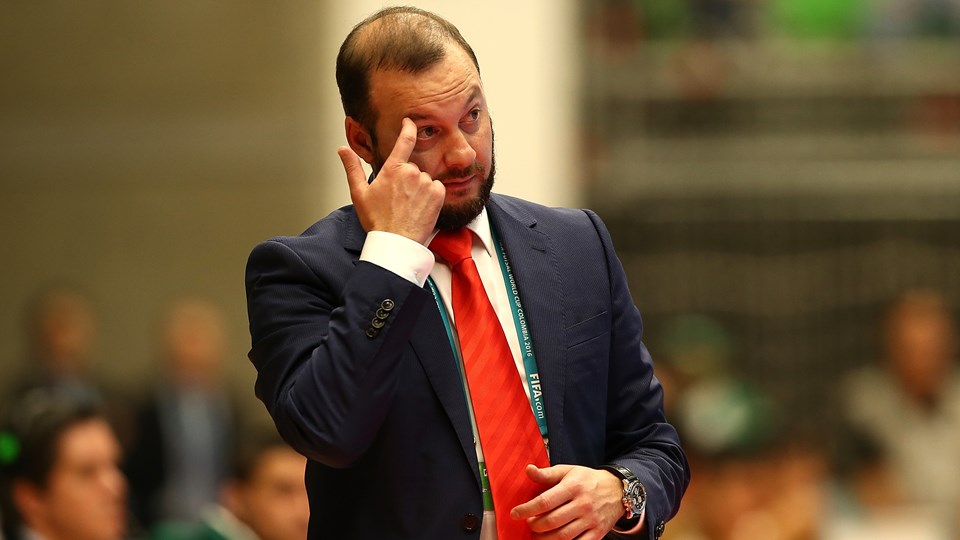
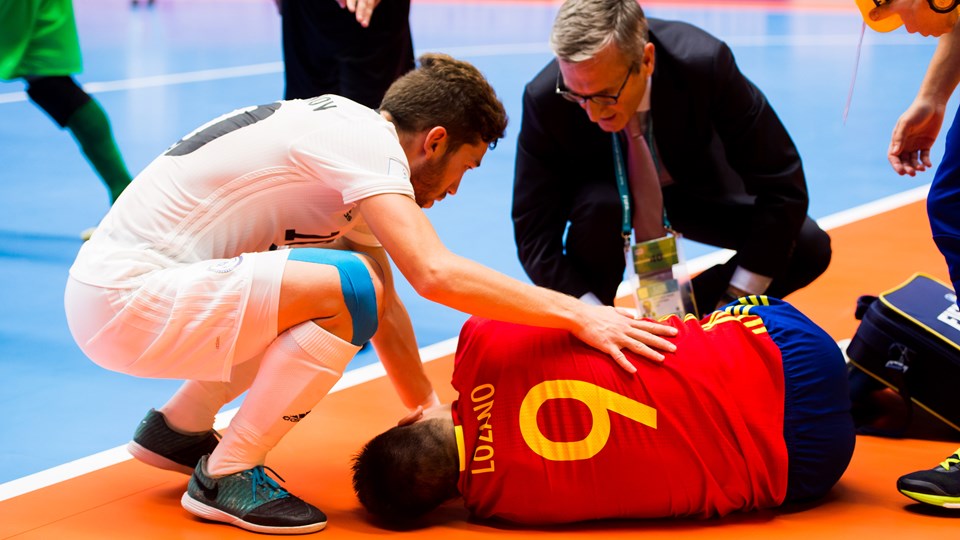
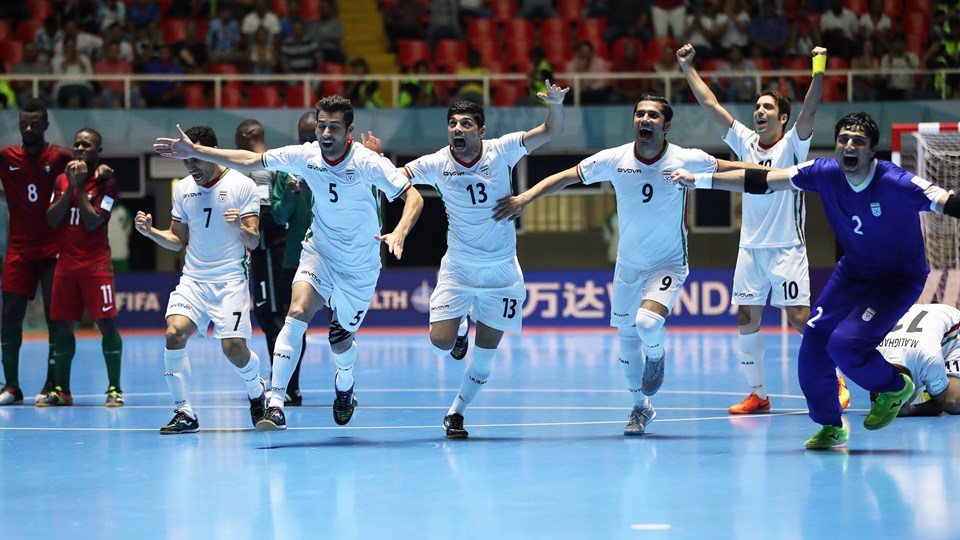
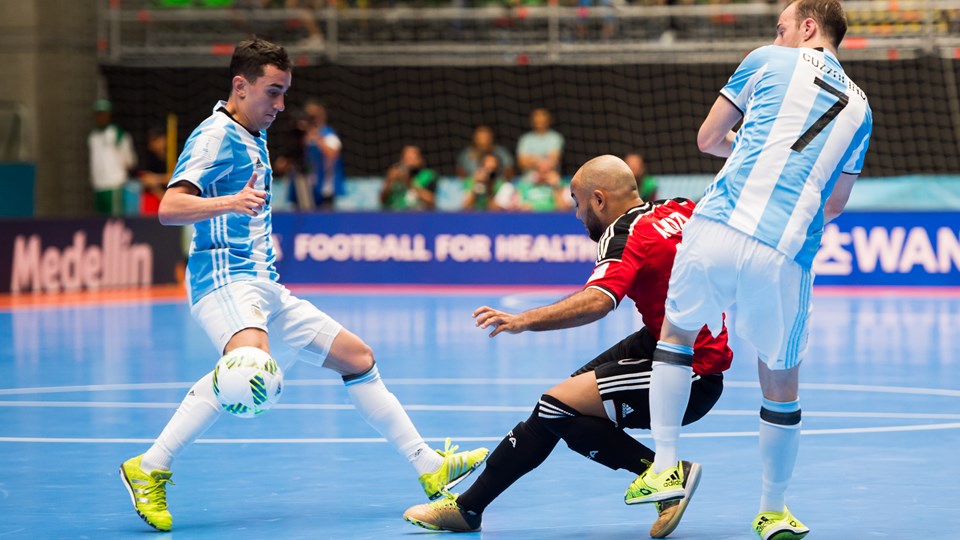
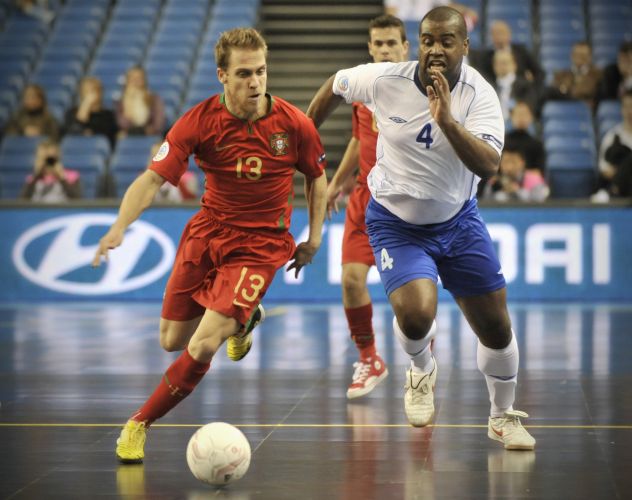
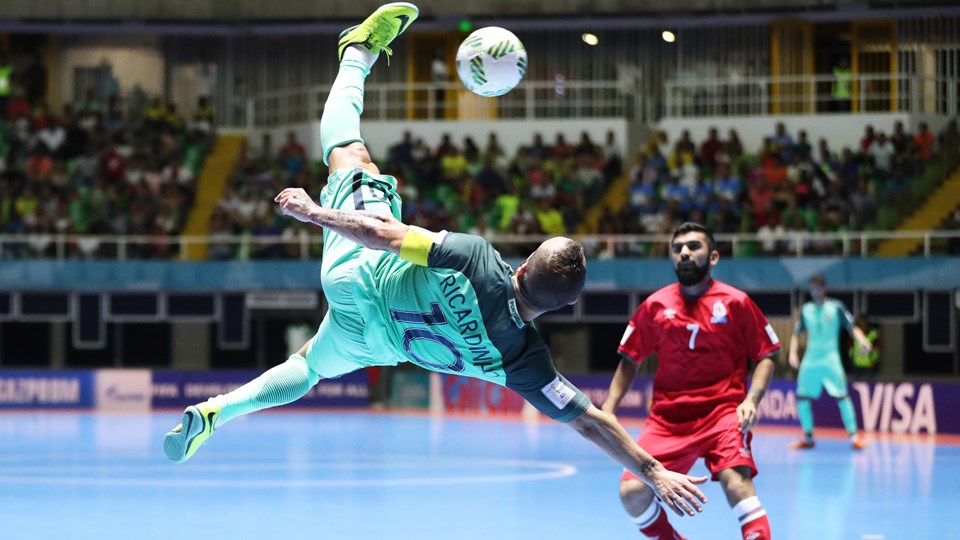
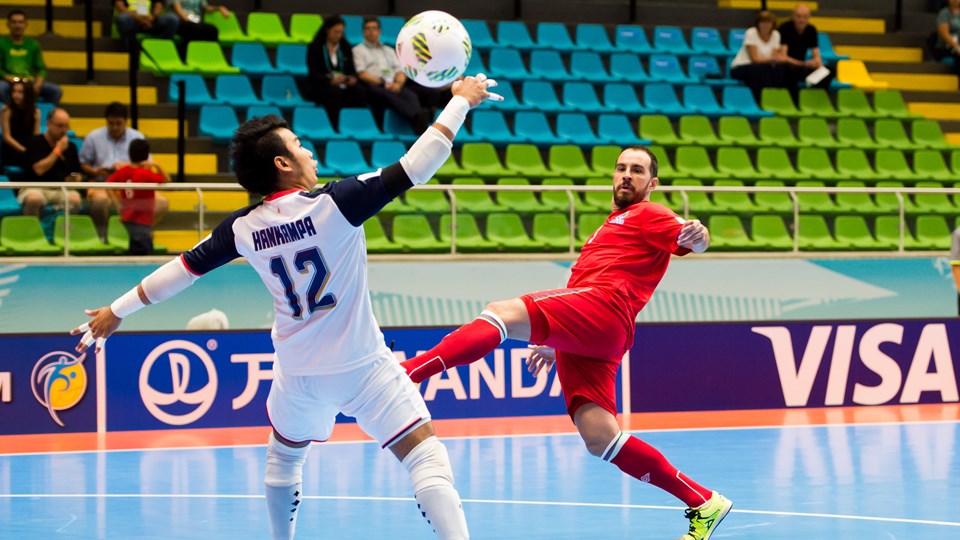
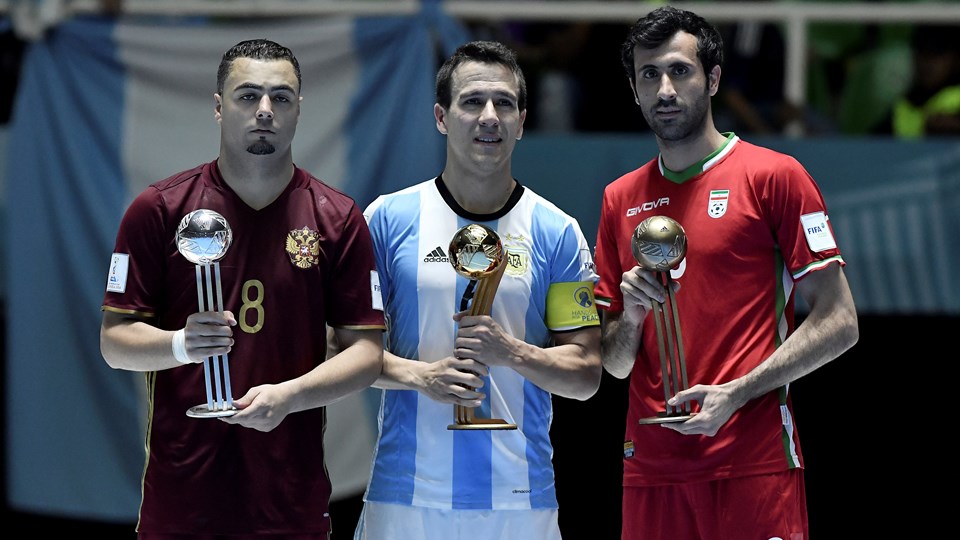
Great Reading! Need to give a shout out to Envivo app. It was easy to use and I didn’t miss a game here in the US. Having run many USFUTSAL tournaments on the operations side I was amazed at one safety issues. I have never seen so many overturned/ falling goals. Luckily they always seemed to fall away from the playing field. Also, one technical issue withe refs. On a couple of occasions I spotted refs changing sidelines after a heated call like they do in AMF. Has FIFA adopted this technique from AMF? Again, wonderful insights from the author!